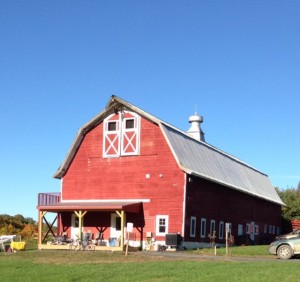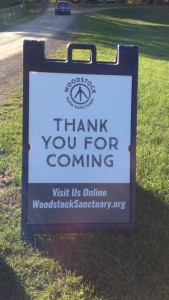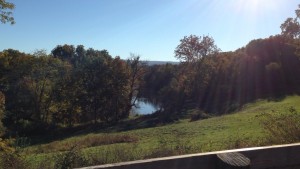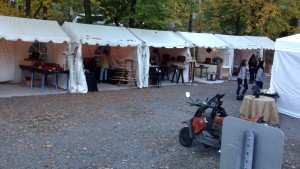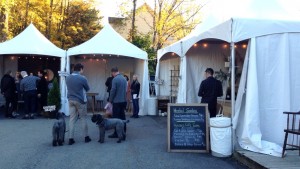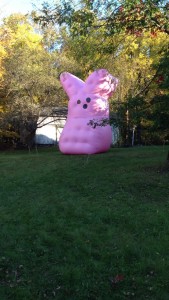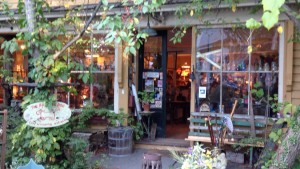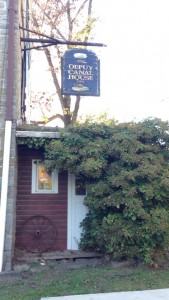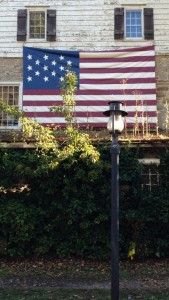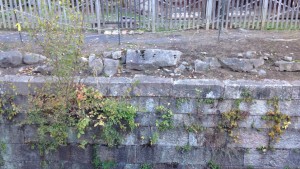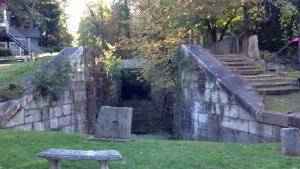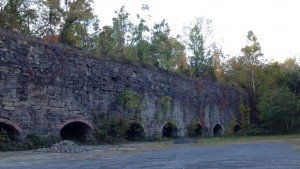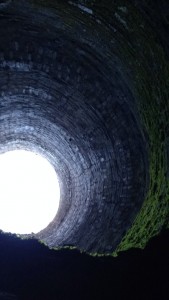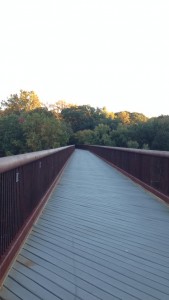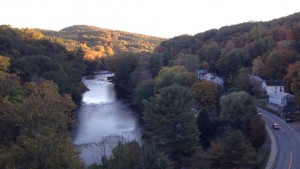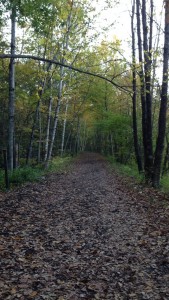We started off the trip going to Woodstock Farm Sanctuary. This organization had just recently changed its location to its current one near High Falls in Ulster County. It is a farm animal refuge, education center, and retreat. We did not have the opportunity to go on a formal tour, but they regularly offer tours in which they introduce visitors to their various resident animals and teach them about the problems with factory farming and animal agriculture. They promote vegetarian and vegan diets and are plugged into the world of animal rights activism. I would argue that they are part of an alternative ‘ethical’ economy that thrives in the Hudson Valley. The area has a long history of environmentalism and now has a lot of activity in organic, local farming etc. These alternatives are often viewed as a more ethical choice (though it’s not actually that simple) and tie into the socially conscious and earthy vibe that the area cultivates. There are also many left-leaning colleges located in the Hudson Valley (Vassar being one of them), which host a demographic of students that might be drawn to such things as an animal refuge that promotes veganism. While the animal rights movement is something I agree with in large part, it is still important to note how inaccessible it can be and how it can be composed of a predominantly white and economically privileged demographic. Most of the people I saw at the sanctuary fit into the demographic. The environmental movement of the Hudson Valley can also at some points be exclusive and cater primarily to this demographic as it plays off of traditionally middle class white American conceptions of reconnecting with nature and does not always center environmental and climate justice.
The drive there was accentuated by fall foliage, near peak. The sanctuary capitalized on the natural beauty of the area by having a nature walk right next door. We went down and checked it out briefly. It was a very pretty trek through the woods right by the River.
Go to this website to find out more about the sanctuary.the http://woodstocksanctuary.org/
Entrance to nature walk
A large part of the Hudson Valley’s economy is also based on people’s desire to return to and reconnect with nature, so nature walks attract people like a magnet. In many ways people come to the Hudson Valley to combat alienation (from nature, from our cultural history, from our food and animals in the case of the sanctuary) and cultivate a sense of authenticity. After the sanctuary we went to a Artisan’s fair in High Falls which made this quest for authenticity abundantly clear. It was a two day event for Columbus Day weekend. There was a folksy vibe around the whole thing, but at the same time a sense of cleanliness and hyper-modernism. There were rows of white tents with clean cut lines, sparkling Christmas lights (all the same uniform color) and ‘well-dressed’ urban looking people selling their products, for example rustic looking coffee tables with unfinished wood. The demographic was young and hip. People seemed to be coming from cities to the fair for the day or the weekend. There were abundant beanies and hipster beards. Though it is hard to tell for sure a person’s class status from just seeing them, everyone’s clothes looked to be ‘cool and laid back’ but still very expensive. The products being sold were also expensive.
The whole thing had a very West Village meets Williamsburg vibe. There were two men in particular whose aesthetic I noticed. I could only describe it as “neo-lumberjack”. One was wearing a bright buffalo plaid with a thick dark beard a beanie and boots. The other had Thor-style blonde hair (also with a beard to match) a Henley and suspenders. Both looked like they were dressed to emulate the look of people who work outdoors but I doubt they had any intention of actually doing so. Everything in this fair seemed like people were putting a lot of effort into looking like they didn’t put too much effort in. It also seemed that part of the appeal was the small town feeling of community. However, most of the people seemed to have come from outside of the area, which begs the questions was there really a sense of community there or was it contrived simply for appearances as a tourist attraction, and did the tourists realize this.
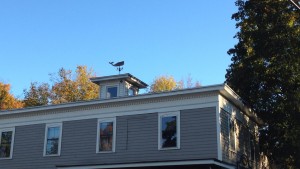
Whale weather vane, reminiscent of the days when the Hudson Valley port towns derived a lot of income from the whaling industry
Cute vintage shop
Part of the attraction seemed to be the old school amaricana ex-industrial working class vibes of the area. There were the ruins of the Delaware and Hudson Canals. Part of the property was preserved as a national historic landmark and called the “five lock walk” (check it out here: http://www.canalmuseum.org/Five%20locks%20walk.html). The canal was operational from 1828-1898 and was used to ship coal from Pennsylvania mines to the Hudson River at Kingston, and then to New York from there. Local cement limestone and bluestone were quarried in order to make it and it’s construction created a lot of jobs which caused communities to pop up all around it. Nearby in Rosendale are the ruins of old cement kilns. In the 1800’s, natural cement limestone was discovered there. The Rosendale cement company produced cement for some of the country’s most iconic landmarks including the Brooklyn Bridge and the Statue of Liberty. Read more about it here: http://www.rosendalecement.net/.
The history of the area and nostalgia surrounding it is attractive especially to those seeking ‘authentic’ experiences. Also, for those attempting to combat their own alienation and return to nature there is a certain poetry to going to a place where the old infrastructure is literally decaying and returning to nature.
Finally, we went to the Wallkill Valley Rail Trail and the Rosendale trestle (bridge). The trail is 22 miles long between the towns of Wallkill and Kingston and is open to walkers, runners, bikers, cross-country skiers, and horse-back riders. The views from the bridge were magnificent and the path itself was bueatiful. There was an entrance to it right across from the Rosendale cement kilns. This trail was also an example of the value that the natural beauty of the Hudson Valley adds to the local economy.

